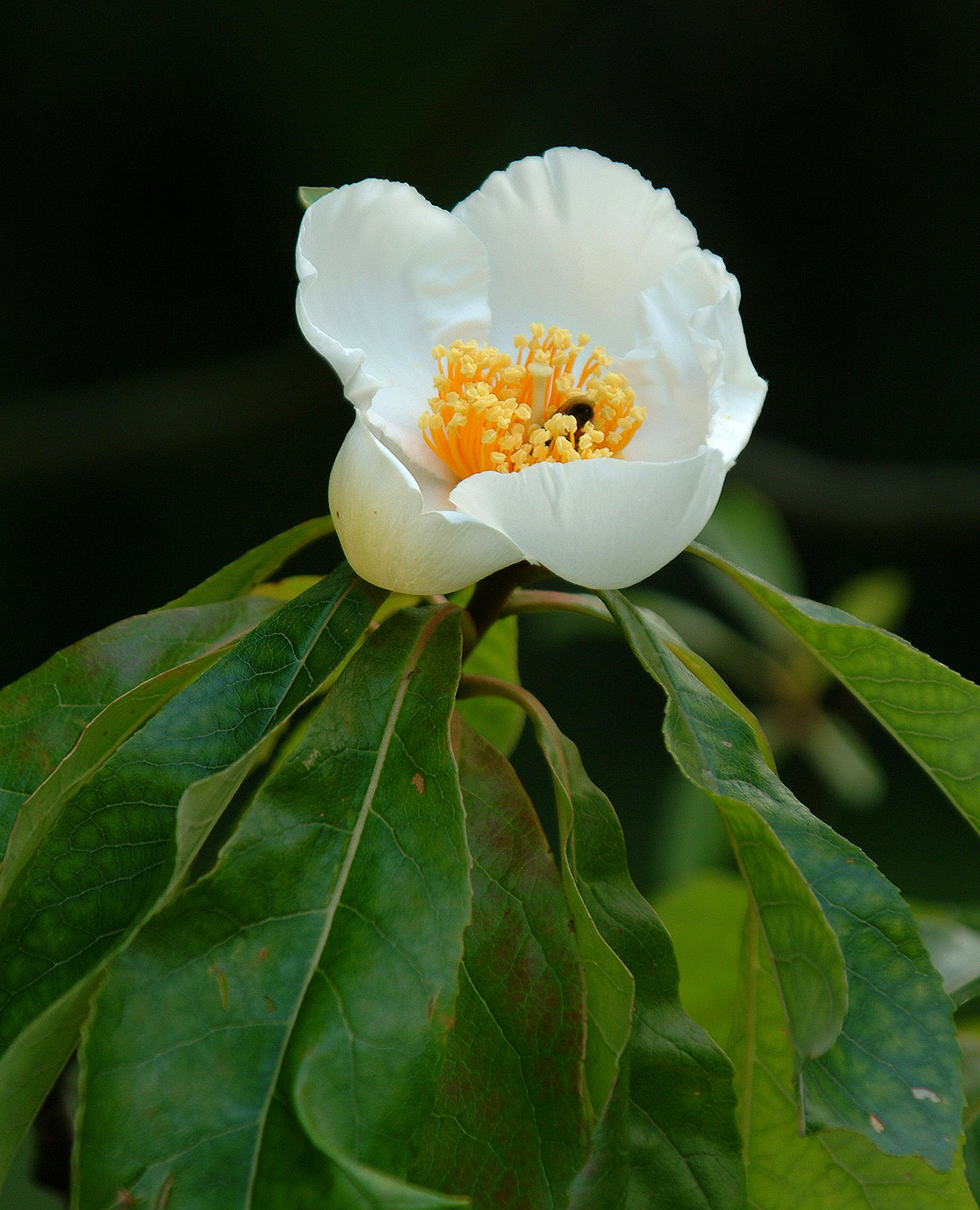Copyright 2003. New Ornamentals Society. All
Rights Reserved.
Lawful for online access only by current society members.
All downloading, printing, saving to media, imaging, screen capture, or
offline use is prohibited.
Duplication by any means, method, or technology is unlawful.
Do not link to this page. |
 click
image to enlarge click
image to enlarge
Dawes Arboretum. August 17, 2003. I was trekking through the
Dawes and saw this guant, leggy tree and headed for the prized
photo-hunting in the conifer valley, giving it just a glance. Something
told me to check out what I thought was a rather weakly Stewartia of
some kind. The nearby path was called the Rare Tree Walk for some reason
after all. And at the Dawes one is apt to be very wrong if you assume
you know the identity of any plant at several paces - many of them turn
out to be very rare cultivars or relatives of what you think it will be.
I'm glad I did and have this picture to share with you. (I tried to get
the bee to dance atop the stamens for a better shot but in 10 minutes he
refused). It turned out to be a Franklinia alatamaha which I'd
never seen in flower anywhere ever.
The tree is considered extinct in the wild or
least only around there due to careful replanting. All plants in the
world's gardens supposedly trace to Bartam's Philly garden, meaning the
gene pool is likely quite narrow. Rumor has it that has been seen a time
or two in the wild but documentation and confirmation are wanting to my
knowledge. It seems likely that at least one disease wiped it out back
in the late 1700's or early 1800's. We are probably pretty darn lucky we
know about it at all. Bartram was a true patriot and hero, every bit as
great a man as the guy this tree is named for. If you kids don't know
about him there's a good summer reading project or book report. It makes
we wonder what other species were lost long before organized botanizing
and curation could preserve them. We know from the fossil record that
North America had lots of strange and good things that just could be as
hard to find as bigfoot and like Metasequoia could some day dazzle us
with their mystery. Let's hope...
LCH |